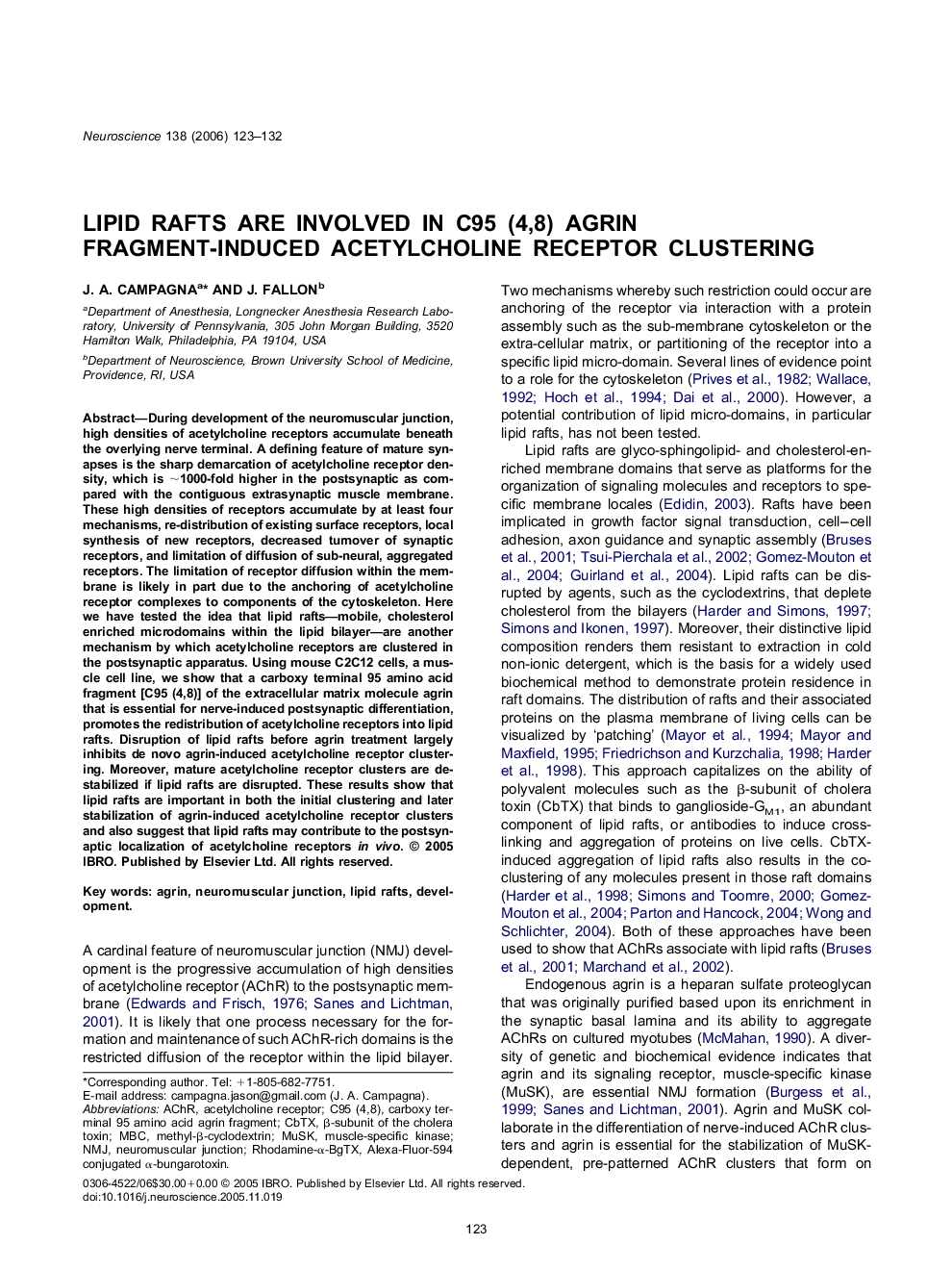| Article ID | Journal | Published Year | Pages | File Type |
|---|---|---|---|---|
| 4342017 | Neuroscience | 2006 | 10 Pages |
Abstract
During development of the neuromuscular junction, high densities of acetylcholine receptors accumulate beneath the overlying nerve terminal. A defining feature of mature synapses is the sharp demarcation of acetylcholine receptor density, which is â¼1000-fold higher in the postsynaptic as compared with the contiguous extrasynaptic muscle membrane. These high densities of receptors accumulate by at least four mechanisms, re-distribution of existing surface receptors, local synthesis of new receptors, decreased turnover of synaptic receptors, and limitation of diffusion of sub-neural, aggregated receptors. The limitation of receptor diffusion within the membrane is likely in part due to the anchoring of acetylcholine receptor complexes to components of the cytoskeleton. Here we have tested the idea that lipid rafts-mobile, cholesterol enriched microdomains within the lipid bilayer-are another mechanism by which acetylcholine receptors are clustered in the postsynaptic apparatus. Using mouse C2C12 cells, a muscle cell line, we show that a carboxy terminal 95 amino acid fragment [C95 (4,8)] of the extracellular matrix molecule agrin that is essential for nerve-induced postsynaptic differentiation, promotes the redistribution of acetylcholine receptors into lipid rafts. Disruption of lipid rafts before agrin treatment largely inhibits de novo agrin-induced acetylcholine receptor clustering. Moreover, mature acetylcholine receptor clusters are destabilized if lipid rafts are disrupted. These results show that lipid rafts are important in both the initial clustering and later stabilization of agrin-induced acetylcholine receptor clusters and also suggest that lipid rafts may contribute to the postsynaptic localization of acetylcholine receptors in vivo.
Keywords
Related Topics
Life Sciences
Neuroscience
Neuroscience (General)
Authors
J.A. Campagna, J. Fallon,
